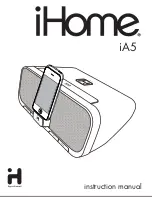
Installation Sheet
18AUG05
P/N: 3100686 REV: 2.0
SuperDuct Four-Wire Smoke Sensor (RJ-45 version)
1 / 3
SuperDuct
Four-Wire Smoke Sensor (RJ-45 version)
Product description
The SuperDuct four-wire smoke sensor coupled with a compatible
controller make up a SuperDuct four-wire duct smoke detector. The
sensor sends an alarm signal to the controller when smoke is detected
in the HVAC system. Upon receipt of the alarm signal, the controller
takes the appropriate actions to provide early warning of the impending
fire and prevent smoke from circulating throughout the building.
Sensors can be installed on the supply side and the return side of the
HVAC system.
WARNING:
SuperDuct duct smoke detectors are not intended as a
substitute for open area protection.
The sensor comprises a plastic housing, a printed circuit board, a clear
plastic cover, and an exhaust tube. The clear plastic cover permits
visual inspections without having to disassemble the sensor. The cover
attaches to the sensor housing using four captive screws and forms an
airtight chamber around the sensing electronics.
A sampling tube is required to introduce air into the sensor. The
sampling tube is ordered separately and varies in length depending on
the width of the HVAC duct.
This document provides installation instructions for the following
SuperDuct four-wire smoke sensors:
Model Description
TSD-SJ, ESD-SJ,
SD-SJ
Four-wire smoke sensor with RJ-45 modular
connector
TSD-SJG
Four-wire smoke sensor with RJ-45
modular connector and cover gasket
TSD-SJCO2
Four-wire smoke sensor with RJ-45
modular connector and TSD-CO2 module
Note:
The TSD-CO2 module has not been performance evaluated to
UL 2075 or approved by ULC.
Related documents
In addition to this document, information about controller installation
and duct smoke detector testing and maintenance can be found in the
following:
•
SuperDuct Four-Wire Controller (RJ-45 version) Installation Sheet
(P/N 3100687)
•
SuperDuct 24V Four-Wire Controller (RJ-45 version) Installation
Sheet
(P/N 3100962)
•
SuperDuct Four-Wire Duct Smoke Detector Technical Bulletin
(P/N 3100685)
Specifications
Dimensions: 8.70 x 5.45 x 1.90 inches
Smoke detection method: Photoelectric (light scattering principle)
Air velocity rating: 100 to 4,000 ft/min
Air pressure differential: 0.005 to 1.00 inches of water
Sensitivity: 0.67 to 2.46 %obscuration/ft
Reset time: 2 seconds, max.
Power up time: 8 seconds, max.
Alarm test response time: 5 to 7 seconds
LED indicators: Alarm (red), Trouble (yellow), Dirty (yellow), Power
(green)
Current requirements: Included in controller specifications
Operating environment
Temperature: -20 to 70
°
C (-4 to 158
°
F)
Temperature with TSD-CO2 module installed: 0 to 55
°
C
(32 to 131
°
F)
Humidity: 10 to 93%, RH noncondensing at 68 to 72
°
C (154.4 to
161.6
°
F)
Sensor limitations
The sensor will not operate unless connected to a SuperDuct four-wire
controller fitted with RJ-45 modular jacks.
The sensor will not sense smoke unless its cover is properly installed
and air is moving through the ventilation system.
The sensor must be installed according to these instructions and in
accordance with all applicable national and local codes as determined
by the local authority having jurisdiction.
The sensor must be operated within the specified electrical and
environmental limits.
Installation guidelines
Install the sensor on a flat section of HVAC duct between six and ten
duct widths from any bends or obstructions and not more than 15 ft
from its controller.
Install supply-side sensors at a point downstream from the supply fan
and after the air filter.
Install return-side sensors at a point before the return air stream is
diluted by outside air.
Sampling tubes must extend at least two-thirds across the width of the
duct. Sampling tubes longer than 36 inches must be supported at both
ends.
Installation instructions
Please read these instructions thoroughly before installing. In addition
to this document, important information can be found in Technical
Bulletin P/N 3100685.
Step 1: Verify the duct air velocity
Drill a small hole at the point where the sensor is being installed. Using
the SD-VTK Air Velocity Test Kit and a suitable air velocity meter,
verify that the air velocity in the HVAC duct falls within the specified
operating range of the sensor and note which direction the air flows.
If the air velocity does not fall within the specified range, relocate the
sensor and seal all holes in the HVAC duct.





















